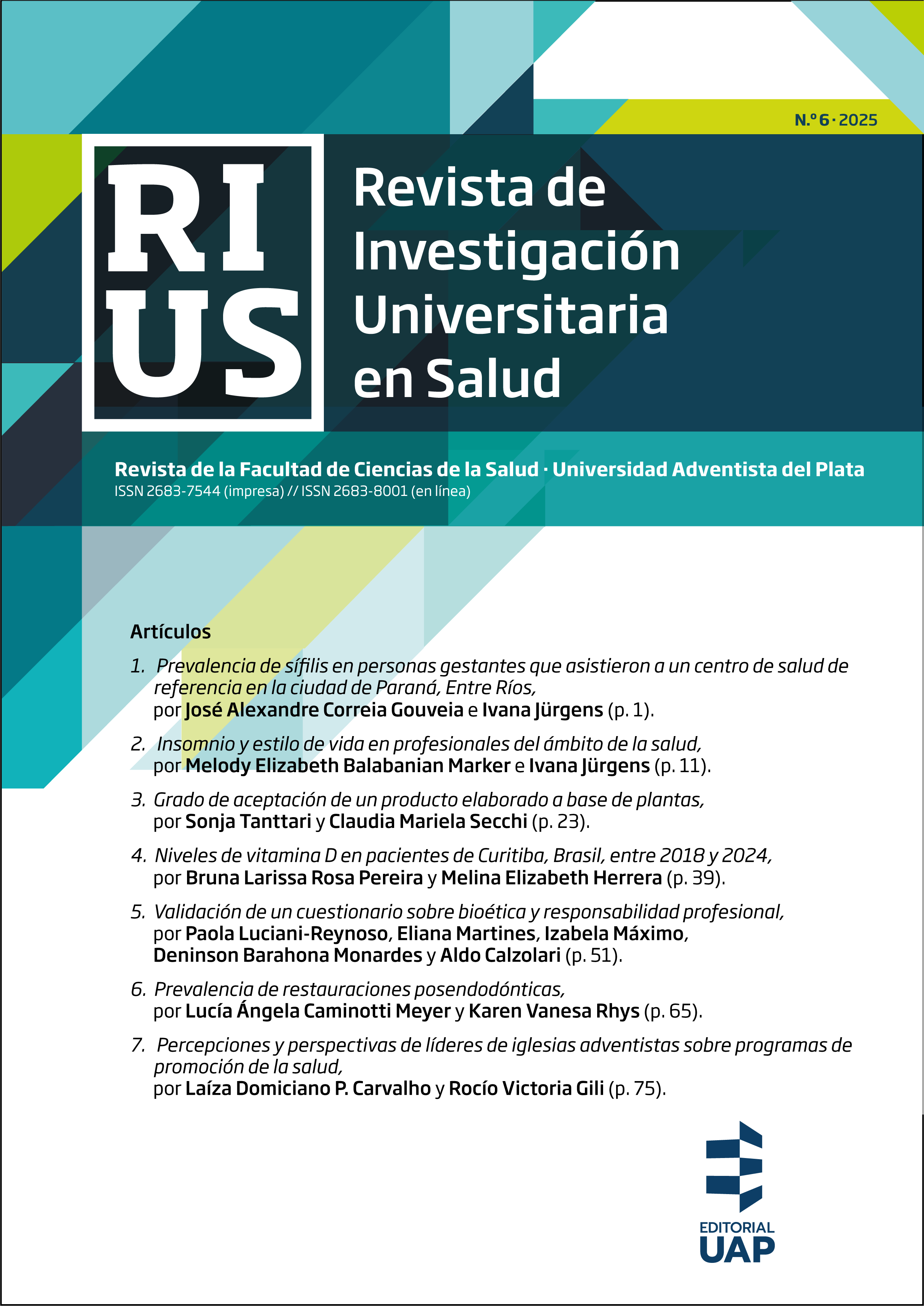Insomnia and Lifestyle in Healthcare Professionals
DOI:
https://doi.org/10.56487/g8j36s79Keywords:
Insomnia — COVID-19 — Anxiety— Physical exerciseAbstract
Introduction. During the COVID-19 pandemic, healthcare professionals faced a complex context with various
physical and psychological consequences, including insomnia. This study aimed to determine the prevalence of insomnia among healthcare professionals, their lifestyle habits, and the associated factors.)
Methodology. This was a descriptive, cross-sectional, non-probabilistic study. The sample consisted of 100 healthcare professionals from a locality in Entre Ríos, and data collection took place between April and May 2023. Validated instruments were used, including the Insomnia Severity Index (ISI), Generalized Anxiety Disorder-7 (GAD-7), and International Physical Activity Questionnaire (IPAQ). A descriptive analysis was carried out using SPSS software according to the study variables, with calculations of frequencies, means, standard deviation, chi-square tests, and t-tests.
Results. Of the total sample, 44% reported insomnia, with physicians showing the highest prevalence (54.5%).
Regarding sex, 65.9% of the participants were women. Among those who reported insomnia, 59% engaged in vigorous physical activity, 79.5% followed a carnivorous diet, 38.6% consumed alcohol, 6.8% smoked, and spent an average of four hours per day seated. Additionally, 29.5% exhibited symptoms of anxiety, 50% worked rotating shifts, and the majority had an average age of 27 years. A significant association was found between having had COVID-19 and the presence of insomnia (p=0.00).
Conclusion. Slightly less than half of the sample experienced insomnia. The highest prevalence was observed among 27-year-old female physicians, with a high rate of vigorous physical activity, low levels of anxiety, consumption of a carnivorous diet, and a history of having had COVID-19.
Downloads
Published
Issue
Section
License
Copyright (c) 2025 Revista de Investigación Universitaria en Salud

This work is licensed under a Creative Commons Attribution-NonCommercial-ShareAlike 4.0 International License.


